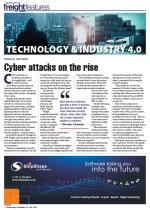Inconsistent and poor-quality data remain two of the biggest challenges facing the freight industry.According to Mark Gatenby, CIO at Tigers, getting competitive rate and milestone data from carriers can be very difficult.“Freight rates work like stock exchanges; rates can fluctuate wildly from day to day and getting the best rates is a daily challenge.
This is especially true now during the Covid crisis where uncertainty is causing large price swings.”
Gatenby said the coronavirus was having a massive impact on businesses in general. “Our expectation is that the post-Covid-19 corporate world will be different in terms of the willingness or requirement for people to work from home.”With this in mind Tigers is currently working on mobility applications for its SmartHub:Connect Application to deliver a product that customers can use to keep up with events as they happen, regardless of where they are. “The notifications are nothing particularly new,” said Gatenby.
“The key element will be the ability to filter notifications based on job role, personal favourites, or sentiment filters. All of this will be added to the Tigers mobile app, along with the more advanced PowerBI graphical dashboards, which will still allow users to drill down into data the same as they would on a desktop.”This functionality will be critical in a world where fewer people are office bound and where real time is becoming normal.“Although real time is often not easy or cheap,” he said.
“To get consistent real-time data related to sea freight in particular means that forwarders have to resort to multiple methods to obtain the same bits of data. This is typically because each carrier has its own methods of doing it or different places or points in the supply chain have different uses, strengths, inconsistencies, exceptions or problems.”
According to Gatenby the digitisation of the freight industry is being pushed along by the need for further integration to edge services. “The need for better security and the abundant availability of new technology for rapid system creation are driving forces. What is holding freight back is the poor quality of data from carriers in most parts of the world and the differing local services expected from forwarders and carriers. For example, how you buy and book carriers is very different in China compared to the US.”
Commenting on trends, he said automation had not been around for long in freight but would start to get bigger in the future thanks to a lot of the manual dry processes being automated, leaving staff to work on the more difficult and challenging tasks

